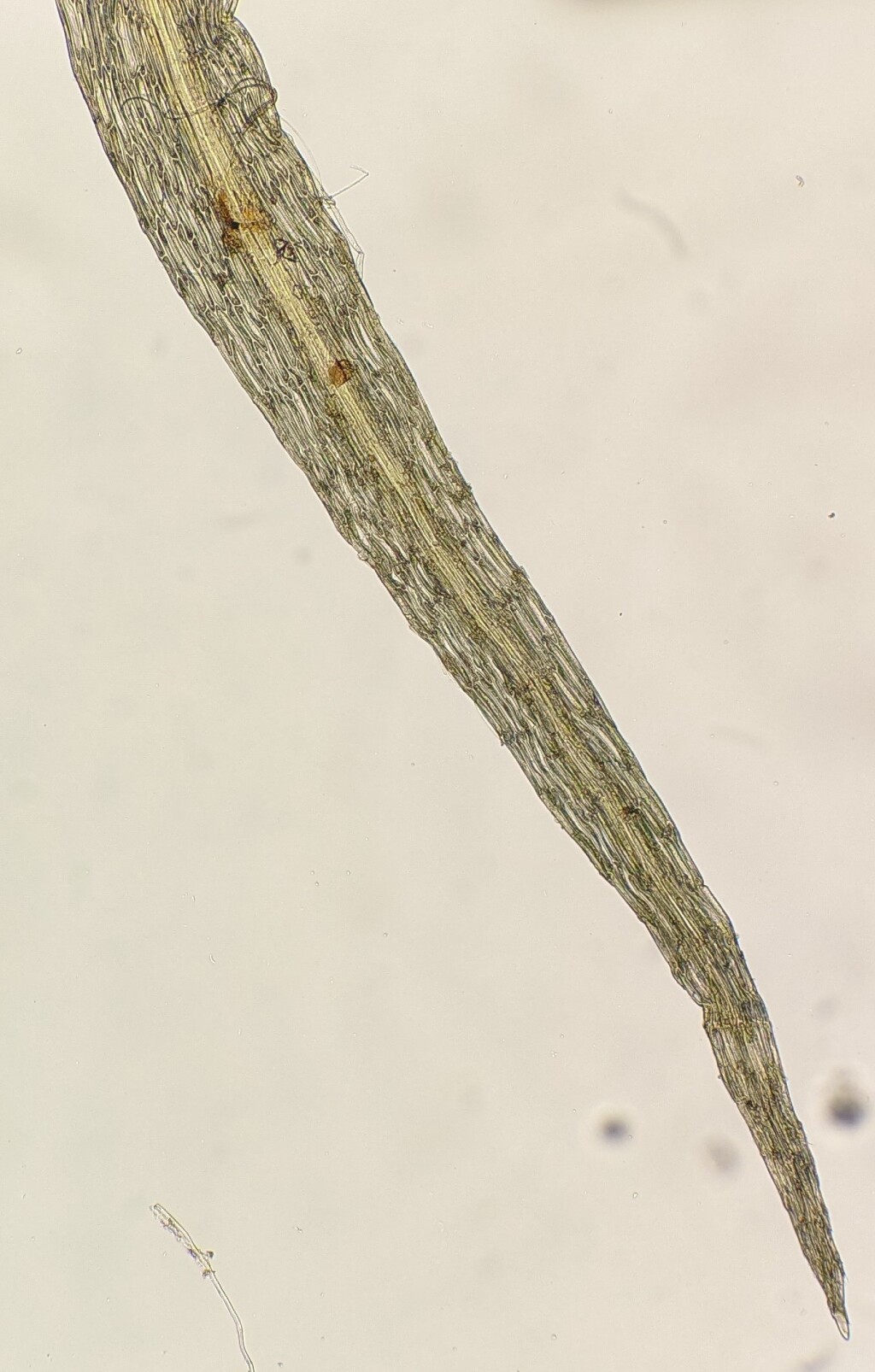Orthodontiaceae
Autoicous, paroicous or dioicous. Asexual reproduction by filamentous propagules in leaf axils or on upper stem or rarely by gemmae on rhizoids. Loose tufts, mats or scattered individuals on tree trunks, tree fern trunks, soil, logs and rocks. Stem erect, simple, forked or branched near base, with dense or scattered rhizoids at base and sometimes leaf bases; central strand present or absent (not in Victoria). Leaves arranged around stem and facing all directions at least in part of the stem, monomorphic, erect-spreading or wide-spreading, sometimes somewhat secund when moist, scarcely altered or curled and twisted when dry; apex rounded, obtuse, acute, or acuminate (not in Victoria), with or without a hairpoint; costa subpercurrent to excurrent; margins entire or crenulate to dentate toward apex, plane or recurved, without a border or rarely with a bistratose border of linear cells (not in Victoria); laminal cells elongate-hexagonal, quadrate, short-rectangular, or rhomboidal, smooth or mamillose; alar cells not differentiated. Acrocarpous or pleurocarpous with sporophytes arising from near the stem base. Capsules erect to horizontal, straight or curved, sometimes sulcate when dry, exserted, operculate. Calyptra cucullate, smooth, glabrous. Operculum conic to rostrate. Peristome double and alternate, single, rudimentary or rarely completely absent (not in Victoria); exostome of 16 entire teeth, rudimentary and irregular, sometimes shorter than endostome, or absent; endostome of 16 reduced segments arising from low basal membrane or basal membrane absent, sometimes adhering to exostome, or segments absent; cilia absent or present.
Worldwide except for polar regions with four genera and 20 species; three genera and four species in Victoria.
Hymenodon and Leptotheca, which have previously been placed in the Rhizogoniaceae (e.g. Churchill & Buck 1982; Gilmore 2006), were shown by phylogenetic analyses of combined chloroplast and mitochondrial DNA sequences to be closer related to Orthodontium than they are to Rhizogonium, and have been transferred to the Orthodontiaceae (Bell et al. 2007). This has created a heterogeneous assemblage of genera with few defining features. Peristome reduction seems to be the main defining feature of the Orthodontiaceae (Bell et al. 2007). The extent of this reduction varies from complete loss in some species (see Tessler 2012) to reduction in size of the exostome or endostome in other species.
 Spinning
SpinningBell, N.E.; Quandt, D.; O’Brien, T.J.; Newton, A.E. (2007). Taxonomy and phylogeny in the earliest diverging pleurocarps: square holes and bifurcating pegs. The Bryologist 110: 533–560.
Churchill, S.P.; Buck, W.R. (1982). A taxonomic investigation of Leptotheca (Rhizogoniaceae). Brittonia 34: 1–11.
Gilmore, S.R. (2006). Rhizogoniaceae, in McCarthy, P.M. (ed.), Flora of Australia. Vol. 51 Mosses 1, pp. 354–366. ABRS, Canberra.
Tessler, M. (2012). A monograph of Hymenodon (Orthodontiaceae). The Bryologist 115: 493–517.



